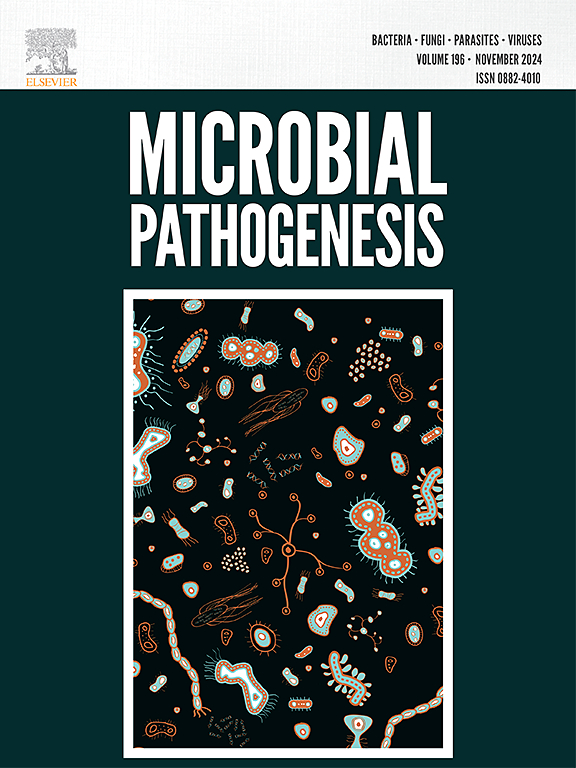高压静电场(HVEF)对肉源性破坏者fragi假单胞菌的杀菌作用及机理:细胞膜损伤和氧化应激。
IF 3.3
3区 医学
Q3 IMMUNOLOGY
引用次数: 0
摘要
本研究旨在探讨高压静电场(HVEF)在不同时间(0、3、6、9、12、15 min)处理对fragi假单胞菌(p.f ragi)的抑菌作用,并通过对细胞壁/膜的损伤和氧化应激来评价HVEF的杀菌机制。结果表明,随着处理时间的延长,fragi的死亡率逐渐升高,15 min时达99.91%,亚致死数先升高后降低;HVEF处理使胞内活性氧积累,导致细菌细胞壁损伤和细胞膜穿孔,膜通透性增加,流动性降低,从而引起胞内组分渗漏。从膜上atp酶的失活可以看出,在HVEF应激下也出现了能量限制。此外,HVEF诱导的fragi P.氧化应激相关基因(sodA、AhpC、KatE)表达水平显著上调,FabF表达水平显著上调。超氧化物歧化酶(SOD)活性和谷胱甘肽/氧化谷胱甘肽(GSH/GSSG)比值的降低进一步表明细胞膜脂质过氧化和细菌氧化应激参与了HVEF诱导的抗菌机制。本文章由计算机程序翻译,如有差异,请以英文原文为准。
Bactericidal effect and mechanism of high-voltage electrostatic field (HVEF) against meat-borne spoiler Pseudomonas fragi: Cell membrane damage and oxidative stress
This study aimed to investigate the antibacterial effect of high-voltage electrostatic field (HVEF) treatment (35 kV) at different times (0, 3, 6, 9, 12, 15 min) against Pseudomonas fragi (P. fragi), and the bactericidal mechanism of HVEF was evaluated through the damage of cell wall/membrane and oxidative stress. The results indicated that with the prolongation of treatment time, the mortality rate of P. fragi increased and was up to 99.91 % at 15 min, and the sublethal count firstly increased and then decreased. HVEF treatment made the accumulation of intracellular reactive oxygen species, which led to bacterial cell wall damage and cell membrane perforation, increased membrane permeability and decreased fluidity, thereby causing the leakage of intracellular components. Energy limitation also appeared under HVEF stress as seen from inactivation of ATPase on the membrane. In addition, expression levels of oxidative stress-related genes (sodA, AhpC, and KatE) of P. fragi induced by HVEF were significantly upregulated while significantly upregulated in expression levels of FabF. The decrease in Superoxide Dismutase (SOD) activity and Glutathione/Oxidized Glutathione (GSH/GSSG) ratio further demonstrated that the lipid peroxidation of cell membrane and bacterial oxidative stress contributed to the antibacterial mechanism induced by HVEF.
求助全文
通过发布文献求助,成功后即可免费获取论文全文。
去求助
来源期刊

Microbial pathogenesis
医学-免疫学
CiteScore
7.40
自引率
2.60%
发文量
472
审稿时长
56 days
期刊介绍:
Microbial Pathogenesis publishes original contributions and reviews about the molecular and cellular mechanisms of infectious diseases. It covers microbiology, host-pathogen interaction and immunology related to infectious agents, including bacteria, fungi, viruses and protozoa. It also accepts papers in the field of clinical microbiology, with the exception of case reports.
Research Areas Include:
-Pathogenesis
-Virulence factors
-Host susceptibility or resistance
-Immune mechanisms
-Identification, cloning and sequencing of relevant genes
-Genetic studies
-Viruses, prokaryotic organisms and protozoa
-Microbiota
-Systems biology related to infectious diseases
-Targets for vaccine design (pre-clinical studies)
 求助内容:
求助内容: 应助结果提醒方式:
应助结果提醒方式:


